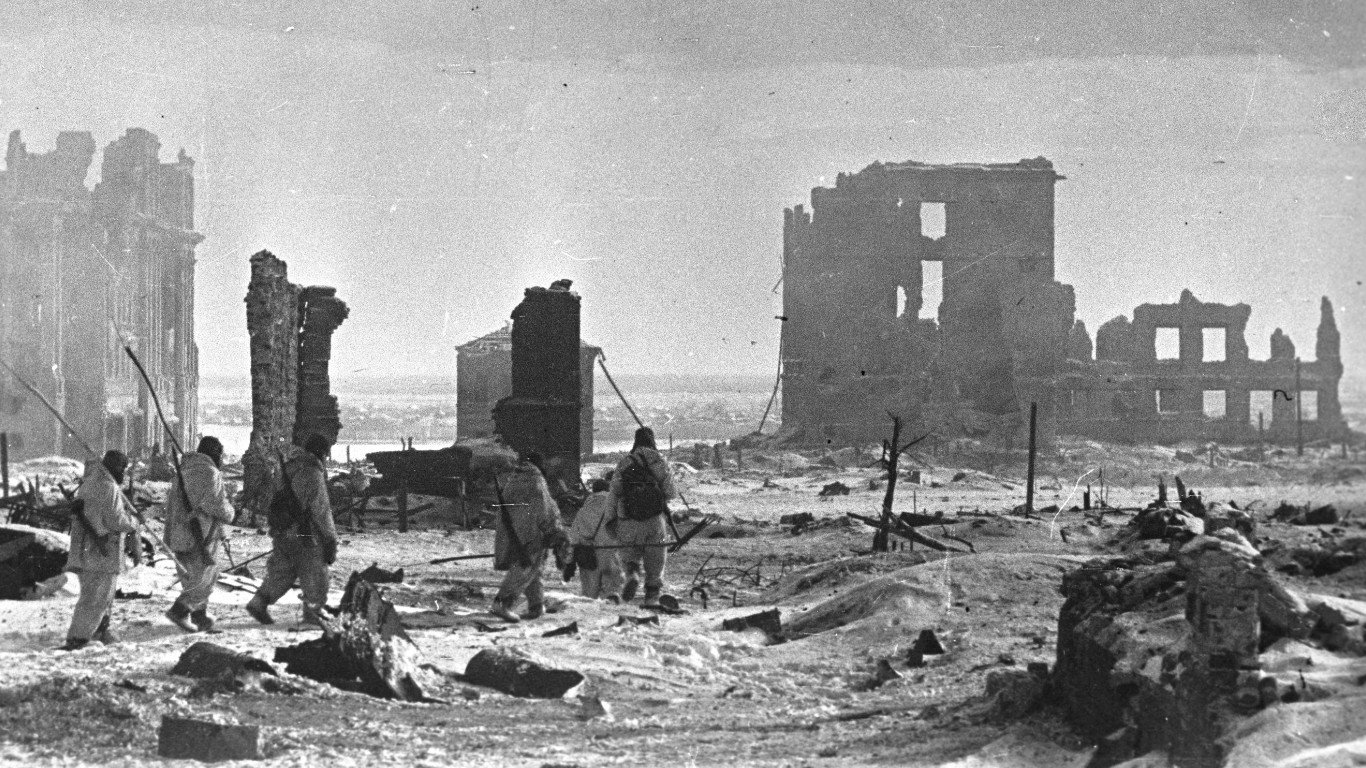

Although the United States has been in a number of so-called wars, Congress last used its power to declare war in 1942, according to the archives of the House of Representatives. That declaration was part of a series at the start of World War II. The other well-known congressional actions were for World War I and the War of 1812.
World War II was, without a question, the largest war in history, in terms of the scope of nations involved, the wide geography of where battles were fought, and the use of ground, air and naval weapons.
Many of the battles in World War II were conflicts between the Soviet Union, one of the Allied powers, and Nazi Germany, the main Axis power. These battles were characterized by the size of military resources involved and the significant civilian population loss.
The fog of war always complicates exact casualty totals. The estimates are the result of historians patching together primary documents over many years.
24/7 Wall St. has chosen the largest battle of World War II based on the number of casualties, which includes deaths and wounded. As part of our evaluation, we included civilian casualties. To make our final selection, we reviewed material from sources such as the Imperial War Museum in London, World War II battle database and more.
The largest battle of World War II was the Battle of Stalingrad. Here are the details:
- Estimated total casualties: 2,000,000
- Date: July 17, 1942, to February 2, 1943
- Combatants: Soviet Union and Nazi Germany
Click here to read about all the biggest battles of World War II.
Take This Retirement Quiz To Get Matched With A Financial Advisor (Sponsored)
Take the quiz below to get matched with a financial advisor today.
Each advisor has been vetted by SmartAsset and is held to a fiduciary standard to act in your best interests.
Here’s how it works:
1. Answer SmartAsset advisor match quiz
2. Review your pre-screened matches at your leisure. Check out the advisors’ profiles.
3. Speak with advisors at no cost to you. Have an introductory call on the phone or introduction in person and choose whom to work with in the future
Take the retirement quiz right here.
Thank you for reading! Have some feedback for us?
Contact the 24/7 Wall St. editorial team.



